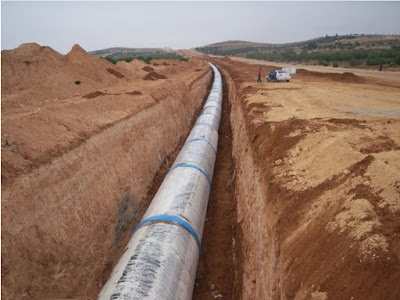Virtual Water Trades
There exists a vital relationship between water scarcity and
food insecurity; the potential strain on this relationship is aggravated by
projected changes in water resources under changing climates and populations. As
a result, concern over the increased risk of famine is hardly surprising. A solid
understanding of the ‘virtual water’ concept can offer an optimistic
alternative to combat these fears and dismiss a pessimism that permeates media
coverage.
Virtual water and trade. In this context, water-scarce
countries ‘import’ virtual water by avoiding the extensive amounts of water
required for agricultural production, and instead importing this food. This is
important for countries in arid areas and those lacking sustainable groundwater
resources, or a combination of both. Hoekstra and Hung (2005) make the link
between agricultural imports and the international market, arguing that
countries can, to an extent, free themselves from the changing conditions of
their local climate by way of these virtual trades.
A useful introduction into crop-derived virtual water trades is offered in a study by Zeitoun et al. (2009) who focus on trades in the Nile Basin between 1998 and 2004. A striking figure in their paper is the discrepancy between intra-basin ‘imports’ between Nile Basin states and ‘imports’ by these states from the rest of the world – the former makes up for 905 Mm3/yr., whilst the latter makes up for 39,230 Mm3/yr. Egypt has a particularly high reliance on these ‘imports’ from the rest of the world, accounting for over 75% of the total 39,230 Mm3/yr. virtual water ‘imports’ from Nile Basin states. As a result of the majority of ‘imports’ and ‘exports’ coming by way of ‘green’ water i.e. rainfed agriculture, there isn’t a significant impact on water resource demand in the basin. However, at the same time, it does little in the way of offering a solution to a deficit of 28,000 Mm3/yr. in trade between the states and the rest of the world.
I am reluctant to discuss in detail the trade of virtual
water within the Nile Basin, and especially the high dependency of Egypt, given
that another blog has already offered some really good information on this. What
I do want to focus on for the rest of this post, however, is the case of Libya
and the Great Man-Made River Project which is mentioned in the same post of the
blog mentioned above.
The Great Man-Made River Project (GMMR)
A self-sufficient food policy in Libya has resulted in the
over-exploitation of groundwater resources, especially given that most of these
resources are non-renewable (Salem 2007). The GMMR, then, was seen as an option to help
counteract this situation.
The GMMR is a network of underground pipes which serve to
supply high-quality water across Libya by pumping from the Nubian Sandstone
Aquifer System. The project was intended to reduce the dependency of northern
Libya on desalination plants and diminishing rain-fed aquifers and to provide
irrigation for large-scale food production (Wheida and Verhoeven 2007a); the $25 billion costs associated
with groundwater extraction are reportedly 10% of desalination, making the GMMR
a particularly attractive solution to the growing problems at first glance. However,
despite the implementation of this project, Libya continues to face water
deficits due to unsustainable levels of extraction, a growing population and
the impacts of climate change, threatening the security of food production
across the country.
 |
| Figure 1. The Great Man-Made River. (Source: AmusingPlanet) |
As such, scholars have discussed the need to rethink Libyan water
management strategies in order to sustain a good standard of living for the
country’s inhabitants. One suggestion is that of virtual water, considering the
claim that a ‘high-degree of self-sufficiency based on locally grown food’ can
never be achieved (Wheida and Verhoeven 2007b).
Given that it can take up to 4,000 litres of water to produce 1kg of wheat and 800 litres to produce 1kg of apples or bananas, it would seem appropriate for
Libya to continue to target self-sufficiency in this area and pursue
alternative options in regard to wheat, namely importing it. Combining the
import of water-intensive crops like wheat with desalination plants could
therefore serve as the most economically sound method to ensure food security,
whilst reducing dependency on a single source.
Nonetheless, it is imperative that governments carefully
consider integrating virtual water trade in their economic and social policies
so as to avoid the dangers of high prices due to potential external shocks. At the
same time, depending solely on the virtual water trade concept isn’t something
I would suggest as its place in international discussions is perhaps best
suited to helping raise awareness of its role in our lives, especially in places
we rarely consider.

Comments
Post a Comment